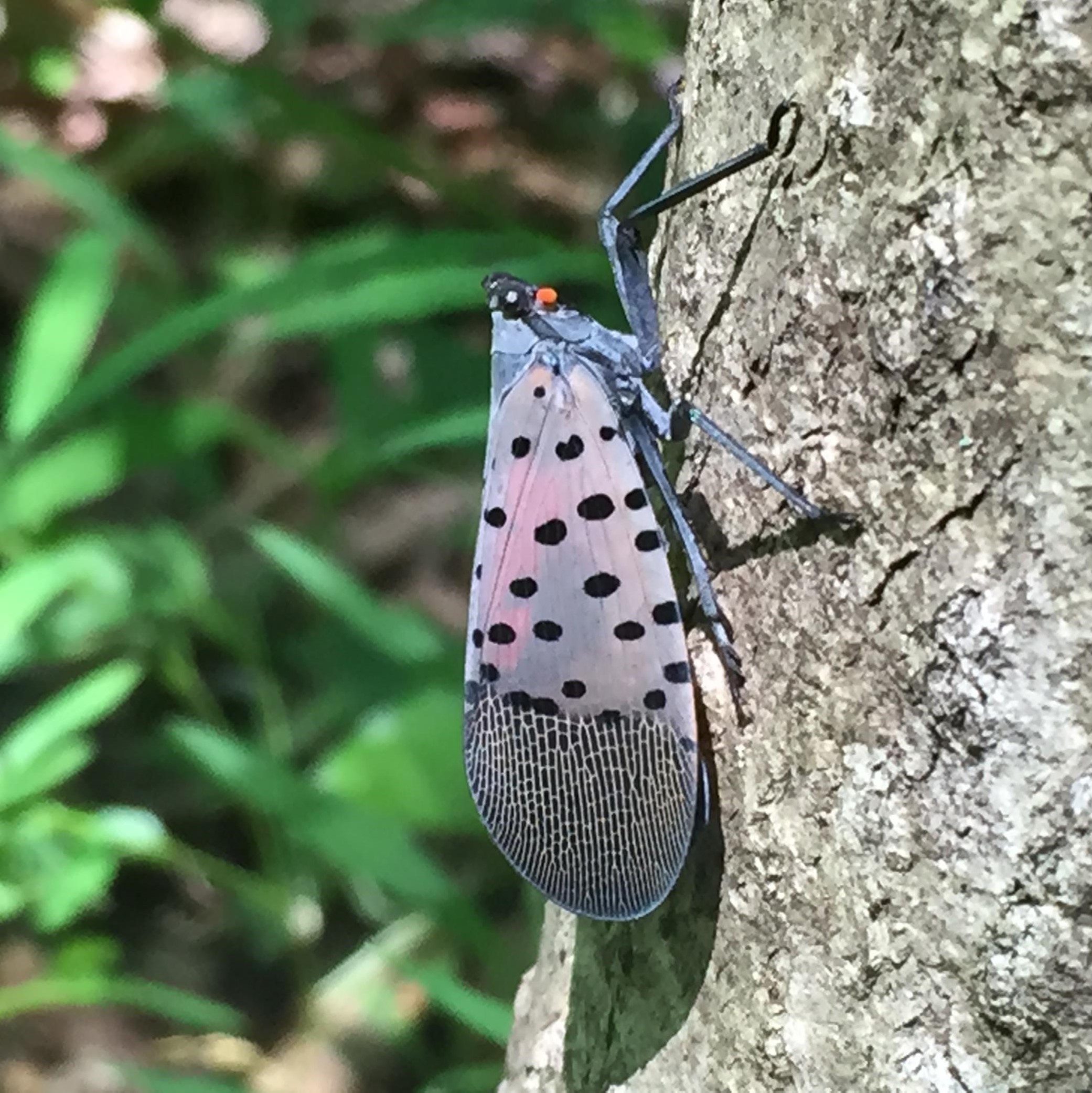News

Beginners Guide to Spotted Lanternfly
There is an invasive species spreading through eastern Pennsylvania, making its way to Pike County. The Spotted Lanternfly (SLF), Lycorma delicatula (White), is an invasive plant hopper that is native to China, India, and Vietnam. It first entered the United States through Berks County, PA. Since its arrival, SLF has moved into many other counties, including Monroe County, Pike’s immediate Southern neighbor.
Spotted Lanternfly has three distinct lifestages, all of which can be seen in Pennsylvania. The photos to the right are the nymph stages, and can often be mistaken for other insects. The adult Spotted lanternfly is pictured above.

Spotted Lanternfly Nymph
SLF can cause a great deal of damage in the areas that it inhabits. There are over 70 species of plants that can be eaten by Spotted Lanternfly, including grapes, hops, and hardwoods. The insects can also have a significant impact on the quality of life for residents of affected counties. When SLF extract the sugary liquid from the plants that they attack, they excrete a sticky gunk called honeydew. Don’t allow the sweet name fool you, this liquid can cover cars, homes, road signs, etc. and make them into a gooey nightmare. The liquid, if left alone encourages the growth of black sooty mold, which can also damage or even kill plants. These traits make the Spotted Lanternfly a formidable enemy to both humans and plants.

Spotted Lanternfly Nymph
What You Can Do:
Spotted Lanternfly may be controlled with your help! In combination with pesticide applications, physical removal of the insect and its egg masses is the best method of destroying SLF. Scrape egg masses off of trees when you can and squish them. When you find the nymphs or adults, if you are in a county where it is not known to exist, collect it or put them in a container of alcohol (rubbing alcohol, hand sanitizer, etc.), to kill and preserve it. After you collect it or photograph it report it to the local Penn State extension office. If you find the SLF in a county where it is already known to exist, simply squish it or put it in an alcohol filled container.
Pennsylvania Department of Agriculture has instated a quarantine in the counties where SLF has been found. This quarantine means that anyone moving in and out of the quarantine area needs to know what to do if they encounter this bug. For personal travel, you can help slow the spread of SLF by not spreading the populations further into the state. Make sure to “Look Before You Leave”!
Penn State also has many recommendations on how to make your home and surrounding property resilient to Spotted Lanternfly. If you have a business that moves in and out of the quarantine zone, a Spotted Lanternfly permit is required for your work vehicle. To obtain a permit, visit the Pennsylvania Department of Agriculture (PDA) or Penn State Extension (PSU) websites.
The most important thing that you can do to prevent the spread of Spotted Lanternfly is to stay informed and help to inform those around you.
